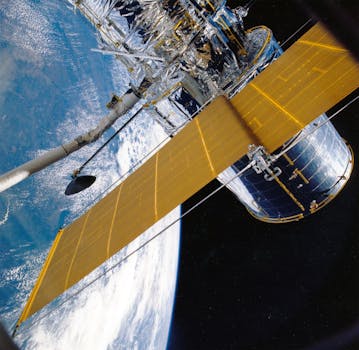From Geostationary to Low Earth Orbit: The Evolution of Satellite Telecommunications in 2023
The satellite telecommunications industry has undergone significant changes in recent years, with a shift from geostationary to low Earth orbit. This article explores the evolution of satellite telecommunications in 2023, including the benefits and challenges of low Earth orbit and the future of the industry.

From Geostationary to Low Earth Orbit: The Evolution of Satellite Telecommunications in 2023
Focus Keyword: Satellite Telecommunications. The satellite telecommunications industry has undergone significant changes in recent years, with a shift from geostationary to low Earth orbit. This shift has been driven by advancements in technology and the increasing demand for faster and more reliable internet connectivity. In this article, we will explore the evolution of satellite telecommunications in 2023, including the benefits and challenges of low Earth orbit and the future of the industry.
Introduction to Satellite Telecommunications
Satellite telecommunications have been around for several decades, with the first commercial satellite launch in 1962. Since then, the industry has grown rapidly, with thousands of satellites launched into space. Traditionally, satellites have been placed in geostationary orbit, which is approximately 36,000 kilometers above the Earth’s equator. Geostationary orbit allows satellites to remain stationary relative to a fixed point on the Earth’s surface, making it ideal for telecommunications and television broadcasting.
The Shift to Low Earth Orbit
In recent years, there has been a shift towards low Earth orbit, which is approximately 160 to 2,000 kilometers above the Earth’s surface. Low Earth orbit offers several advantages over geostationary orbit, including lower latency, higher bandwidth, and improved connectivity. Low Earth orbit satellites are also less expensive to launch and maintain than geostationary satellites, making them an attractive option for companies looking to provide global internet coverage.
Benefits and Challenges of Low Earth Orbit
The benefits of low Earth orbit include faster data transfer rates, lower latency, and improved connectivity. Low Earth orbit satellites can provide internet connectivity to remote and underserved areas, making it an attractive option for companies looking to provide global internet coverage. However, low Earth orbit also presents several challenges, including the need for a larger constellation of satellites, higher maintenance costs, and potential interference with other satellites and spacecraft.
Future of Satellite Telecommunications
The future of satellite telecommunications looks promising, with several companies, including SpaceX, Amazon, and OneWeb, planning to launch thousands of low Earth orbit satellites in the coming years. These constellations of satellites will provide global internet coverage, with speeds comparable to fiber-optic cables. The increasing demand for satellite telecommunications is driven by the growing need for global internet connectivity, particularly in remote and underserved areas.



